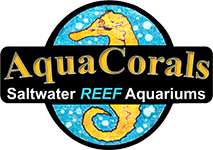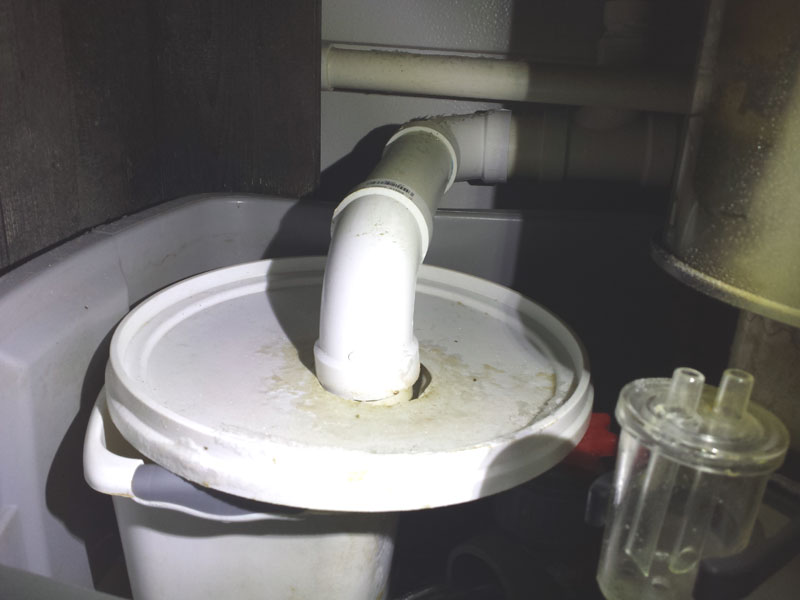
Sump

The Sump - There are 3 primary functions to a sump. To collect water from the main tank & condition it by 1. Heating the water 2. Skimming the water of dissolved organic material & 3. Oxygenating it from the "dumping action". A sump can be made by using another fish tank, tote or specifically purchased sump. The sump "size" has nothing really to do with how many gallons of water it can hold but rather how much "space" it gives us to hold all the equipment we need IN it and space enough to hold any water that back feeds down to the sump when the pump is powered off or if we loose power. My best advice is to purchase the largest sump container you can fit under your stand!! More room to work with is always better! :c)
Warning! Most commercial sumps are partitioned & restrict what size equipment we can place in them. Many manufacturers state their sumps are suitable for a certain size tank/system but most often they are NOT as they are not designed to handle the minimum 10x per hour turnover rate we need & many times are too small to fit the equipment we need in it! This includes most so-called "Reef Ready" pre-drilled tanks!
I recommend using a good quality tote (this is what I use!) - find a sturdy (like Rubbermaid) tote with a flat bottom (no wheels!) - the biggest your stand will allow & for most, no taller than 16 inches in order to more easily remove your skimmer collection cup. The best tote design is one around 14-16 inches tall, is completely flat on the bottom inside and is super strong & doesn't bow out when full of water. If you need a smaller tote than this, most Home Depot, Walmart & Target stores have good quality totes. Colored totes tend to be stronger than the clear ones.
The Pump (in-line or submersible) pumps the water back up - returns it into your tank. The dumping of water from the overflow into the sump naturally creates a ton of bubble = aeration, basically super saturating the water with oxygen. This type of system can handle a power outage many hours longer than mechanically filtered tanks. The sump houses your heater & skimmer, decreasing the amount of equipment in your main tank. Saltwater tanks which do not utilize an overflow system will have a “film” on the tank’s water surface (which not only looks nasty but also blocks light from entering the tank & deters nitrogen gas/air exchange). My overflow system skims the water’s surface, removing any film material & gets it down to the skimmer where it's removed.
The Bubble Diffuser is where the water dumps into the sump. Usually made of a simple bathroom trash can or 5g salt pail (minus the metal handle) or any clean plastic/PVC container that we can make an hole in. The dumping of the water down to the sump creates a ton of micro bubbles which if sucked up by the pump will fill our tanks with these bubbles which irritate the fish & corals and can even kill corals if left to accumulate on the coral flesh. Given this, we need to diffuse the dump flow.
Below is one version running on a 220g/75g tag on here at AquaCorals. It's a simply a Rubbermaid bathroom trash can (new & cleaned with white distilled vinegar, hot water & paper towels). I cut a hole on the left side bottom about 6 inches wide by 2 inches tall. I made the hole about an inch up from the bottom. Leaving this lip keeps the rocks I used inside the diffuser from slipping out the hole. A couple pieces of live rock not only help keep the diffuser in place but also helps break the bubbles. This is also a great place to run a bag of ROX carbon & Polyfilter pads when needed. I used a salt pail lid to cover the diffuser to stop any splashing & eliminate any salt creep. Note that the 2 inch dump pipe is above the water level. This is very important as we don't want to restrict the dump in any way. Always dump above the sump water level.



Notice the skimmer outflow is directed towards the outflow of the bubble diffuser and away from the sump pump (which is not seen here but is to the right of the skimmer). Directing the skimmer's outflow towards the diffuser's outflow helps push back any bubble & makes most of them them rise & break in this area. Again, so they don't reach the sump pump & get thrown into our tank.
Still working on this article. Check back for more!

